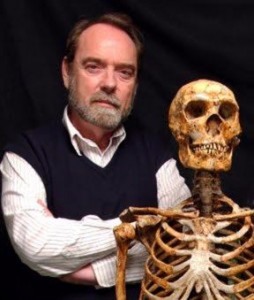When: 7:00PM, Thursday April 14th, 2016
Where: First Cong. United Church of Christ, 1126 SW Park Avenue Portland, OR 97205
Paleoanthropology, the study of human evolution, has always followed a rather insular path. Most successful mammal families show a strong tendency to diversify, throwing off numerous species that all explore different aspects of their group’s evolutionary potential. Yet the fact that Homo sapiens is the lone hominid on the planet today tempts us, in contrast, to reconstruct our history by projecting that one single species back into the past in a linear sequence of increasingly primitive ancestors. This scenario implies that we are the perfected products of long-term natural selection. But recent huge additions to the human fossil record show that our current lonely state is altogether unprecedented: up until a mere forty thousand years ago, several different hominid species typically coexisted on Earth, making our family a typical mammalian one. The fact that we have been able to eliminate the competition implies that there is something very novel about our species Homo sapiens, and particularly about the extraordinary way in which we process information. I conclude my talk by sketching a scenario of how this human uniqueness may have come about.
Dr. Ian Tattersall, Division of Anthropology Curator Emeritus, American Museum of Natural History. See books by this author.
For more information, please visit: http://www.isepp.org/Pages/15-16%20Pages/Tattersall.html
